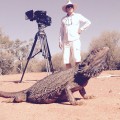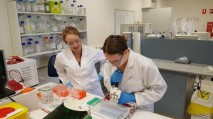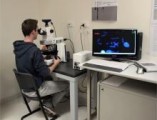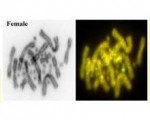Congratulations to Xiuwen Zhang for her article resolving the phylogenetic relationships of the enigmatic Western Swamp Turtle using whole mitochondrial sequencing. The online version of the article, co-authored by Peter Unmack, Gerald Kuchling, Yinan Wang and Arthur Georges, appeared today in the journal Molecular Phylogenetics and Evolution.

Highlights
- Whole mt genome for the endangered Pseudemydura umbrina reported for the first time.
- Phylogenetic analysis resolves the enigmatic relationship of Pseudemydura.
- Pseudemydura is the monotypic sister to the remaining Australasian chelid radiation.
- We resurrect sub-family Pseudemydurinae for Pseudemydura umbrina.
Pseudemydura umbrina is one of the most endangered turtle species in the world, and the imperative for its conservation is its distinctive morphology and relict status among the Chelidae. We use Illumina sequencing to obtain the complete mitogenome for resolving its uncertain phylogenetic position. A novel nuclear paralogue confounded the assembly, and resolution of the authentic mitogenome required further Sanger sequencing. The P. umbrina mitogenome is 16,414 bp comprising 37 genes organized in a conserved pattern for other vertebrates. The nuclear paralogue is 547 bp, 97.8% identity to the corresponding mitochondrial sequence. Particular features of the mitogenome include an nd3 174+1A frameshift, loss of DHC loop in tRNASer (AGN), and a light-strand replication initiation site in Wancy region that extends into an adjacent tRNA gene. Phylogenetic analysis showed that P. umbrina is the monotypic sister lineage to the remaining Australasian Chelidae, a lineage probably dating back to the Cretaceous.
Background The affinities of Pseudemydura among the Chelidae are not well established. Early work using serological comparisons revealed that Pseudemydura, Emydura-Elseya, and Chelodina formed an unresolved trichotomy (Burbidge et al. 1974). Many of the defining morphological characters of Pseudemydura have been regarded as autapomorphies, and so not useful for phylogenetic analysis. Nevertheless, Gaffney (1977) placed Pseudemydura as sister to all the remaining extant chelids of both Australasia and South America (as the new subfamily Pseudemydurinae), while admitting that his case, based on a single retained primitive character, was weak. Subsequent DNA sequence studies were unable to resolve the conundrum. 12S mitochondrial rRNA data were unable to conclusively establish the relationships of Pseudemydura, but tentatively resolved it as sister to the other Australasian shortnecked genera—Emydura, Elseya, Myuchelys, Rheodytes and Elusor (Seddon et al. 1997). Additional sequence analysis from mt 16S rRNA and nuclear c-mos supported this arrangement, but bootstrap support remained poor (Georges et al. 1998). A more recent analysis, using the same data drawn from Genbank, resolved Pseudemydura as sister to Chelodina (Guillon et al. 2012). Subsequently, in an broad analysis of previously published sequence data representing 13 mitochondrial and nuclear DNA loci and including 83% of all extant turtle species, Pereira et al. (2017) resolved Pseudemydura as sister to all short-necked Australasian chelids, with those two clades sister to Chelodina. Most recently, Zhang et al. (2017) analyzed the whole mitogenome of Pseudemydura and demonstrated it to be sister to all Australasian chelid turtles (subfamily Chelodininae), with strong bootstrap support; consequently, they proposed resurrection of the subfamily Pseudemydurinae Gaffney 1977.









